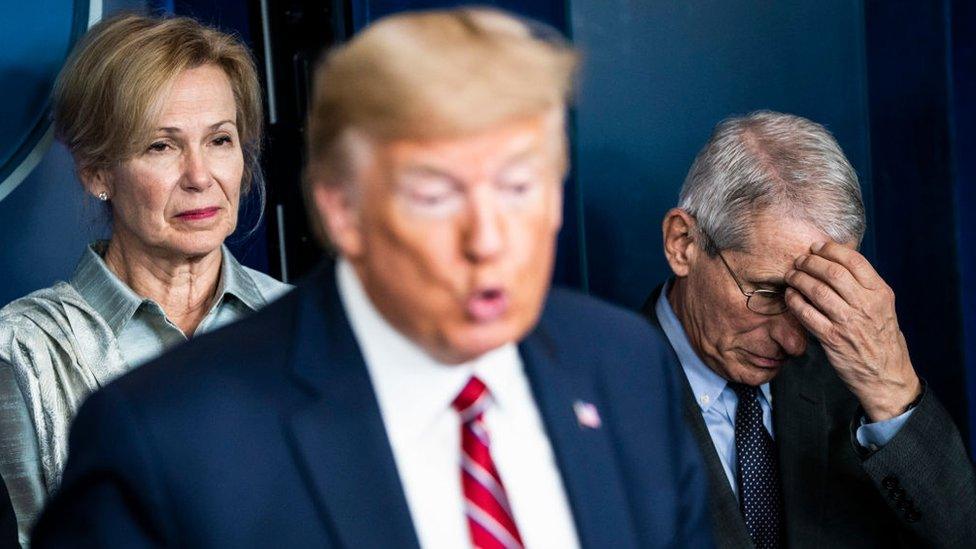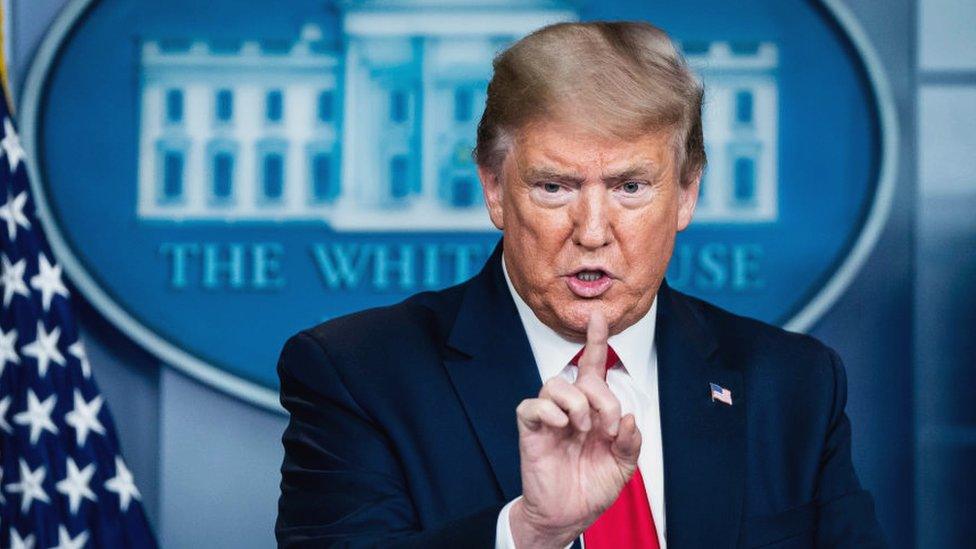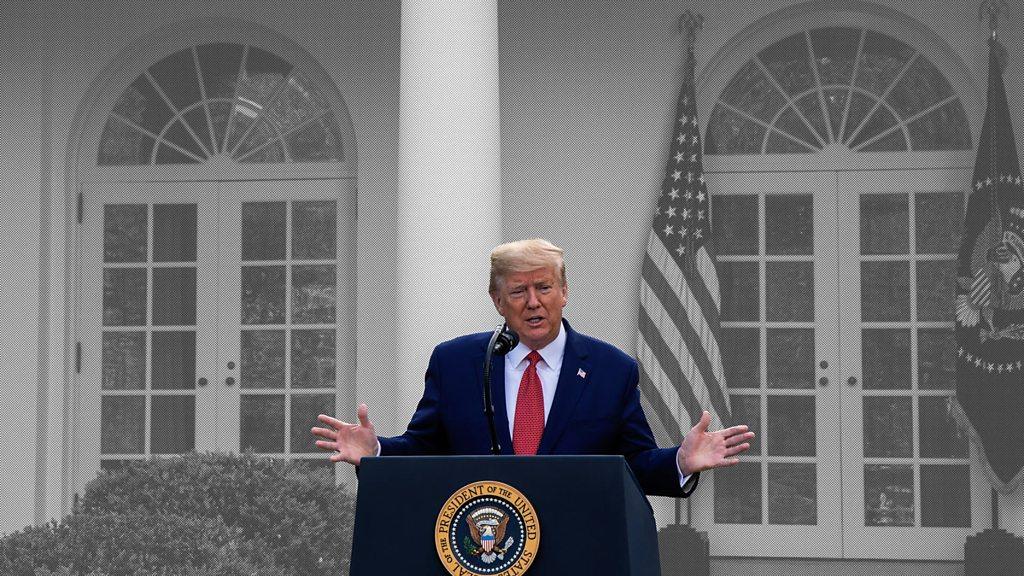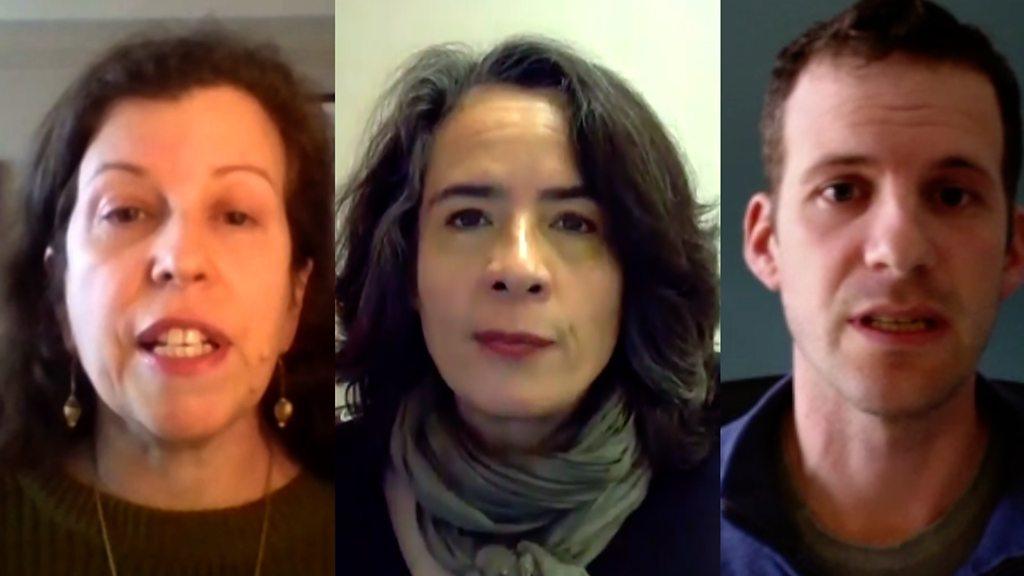Trump's daily briefings may be over. Why the change in script?
- Published
How Trump's attitude toward coronavirus has shifted
After three days without a coronavirus task force briefing, the White House now says they will take on a new format as the president prepares for a Monday evening press conference instead. Why the change?
Part press briefing, part grievance-airing, the all-Trump spectacle that is the daily coronavirus task force show, broadcast live from the White House for the past month, appears to be coming to a close.
In 35 briefings over 39 days, the president - confined to the White House - made a ritual of sparring with reporters and standing aside as staffers sang his praises and offered updates on the often dire situation. He frequently boasted that his evening appearances were garnering blockbuster ratings. For the former reality television show host, this was an all-important metric.
At first, the high viewership appeared to be translating into improved overall public approval for the president, prompting some of the president's critics - who considered the events more style than substance - to demand the news media stop covering them.
As the US death toll from the virus mounted and the economic hardship worsened, however, the president's overall job approval once again declined, external. The substance of the president's sometimes contradictory or unsubstantiated comments at the briefings drew sharper criticism, culminating last week in widespread outrage and derision after he suggested that scientists research using disinfectants and light to destroy the virus inside a human body.

The president, seen here with doctors Birx and Fauci, has drawn ire for his sometimes contradictory comments
Some White House aides had been urging the president to back off from the daily briefings, and at last he appears to have agreed. Despite enjoying the national spotlight, the president may have acknowledged that the events were doing more political harm than good.
On Friday, he left the evening news conference without taking questions.
"What is the purpose of having White House News Conferences when the Lamestream Media asks nothing but hostile questions, & then refuses to report the truth or facts accurately," he tweeted on Saturday. "They get record ratings, & the American people get nothing but Fake News. Not worth the time & effort!"
He followed that with a flurry of bitter tweets accusing the media of bias and a failure to acknowledge how hard he works as president.
Doctors dismantle Trump's treatment comments
No press conferences were scheduled over the weekend. A task force event on Monday afternoon was announced, then cancelled, then rescheduled as a presidential press conference on testing and "safely opening up America again", as the press secretary indicated changes in the format of the task force appearances going forward.
The chaos in the day's schedule suggests the White House is still uncertain of the path forward.

A SIMPLE GUIDE: What are the symptoms?
LEADING THE WAY: How California kept ahead of the curve
ON FRONTLINE: The young doctors being asked to play god
FACTORY HOTSPOT: The untold story behind America's biggest outbreak
REASON TO HOPE: The good that may come out of this crisis

The president's advisers reportedly want him to focus more on the economy now, and less on the health issues - which could be more comfortable terrain for the businessman-turned politician.
For more than a month, however, Trump gave the media an amount of accessibility and interaction that has few parallels in modern US presidential history. It offered a much closer view of an unconventional president in an unfiltered, unvarnished setting.
It may not always have helped the nation deal with the devastating effects of the virus. It may not have helped boost the president's re-election fortunes. It will, however, provide a fascinating record of the Trump presidency at a moment of crisis for future generations to study.
- Published24 April 2020

- Published3 April 2020

- Published25 April 2020

- Published24 April 2020

- Published1 April 2020
